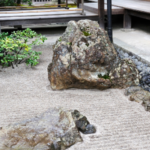Autumn Olive thorns can be very painful, but are they poisonous? They aren’t listed among the poisonous or toxic plants around the world, but there are still reasons to be wary of getting pricked.
In this article, you can explore the dangers of these thorns, how to avoid them, and what to do if you end up on the wrong end of one.
Are Autumn Olive Thorns Poisonous?
They aren’t listed among the poisonous or toxic plants of the world. They are, however, several inches long and extremely sharp.
Evidence suggests they’re much like rose thorns. Getting pricked will hurt, but it won’t poison you.
What Happens If I’m Pricked By Autumn Olive Thorns?
Like many thorns, once they break the skin, there’s a good chance they’ll leave the thorn tip embedded. Depending on how deep the puncture is, there’s a chance a larger section of the thorn could break off.
The embedded section can cause pain and inflammation. If not treated properly, this could lead to an infection.
How Long Should It Take The Irritation to Disappear?
The initial sting should fade within a few hours. However, there might be some inflammation and pain for a couple of days.
How Do I Know If I’m Getting an Infection?
Increased pain and swelling occur. Red streaks from the site of the puncture may appear.
You may also see some form of discharge, such as pus. If you see any of these signs, you should consult a doctor immediately.
What Should I Do If I’m Pricked By An Autumn Olive Thorn?
The first thing to do is limit the chance of contamination. Find a place where you can wash the wound with clean water or a disinfectant.
Stop the bleeding, and carefully check to see if any part of the thorn remains in the injury. If fragments remain, remove them.
You may need tweezers, and another person’s help to make sure the wound is fully cleared.
Cleanse the puncture again. You may want to bandage the injury or wear a protective covering as a precaution.
How Can I Avoid Getting Pricked?
Wear protective gear. Long pants, long sleeves, and gloves are all recommended.
You should also consider close-toe shoes.
Is There Anything Else I Should Beware Of in Regards to Autumn Olive Thorns?
The thorns aren’t inherently poisonous, but they can be coated in hazardous substances. Chemicals, other plant oils, fungi, and bacteria can all exist on the surface of the thorns.
Introducing any of these substances into your bloodstream is dangerous. They increase the risk of infections, and they can also have their own adverse effects on the body.
Even simply walking through undergrowth after getting a puncture wound risks contamination by other plants or substances.
What’s the Best Way to Counter the Risk of Contaminants?
Wear protective clothing to reduce the risk of injury. Carry supplies to quickly and efficiently clean and protect any injuries you may receive.
Be mindful of your surroundings. With a little bit of attention, you can avoid most of the potential hazards you might encounter.
Related Articles
- Backyard Garden Design

- Front Yard Landscaping Ideas

- Smart Watering: The Key to a Vibrant and Lush Lawn

- Unveiling the Timeless Charm of Cottage Garden Inspiration

- Zen Garden DesignZen Garden Design

- Container Garden Ideas




